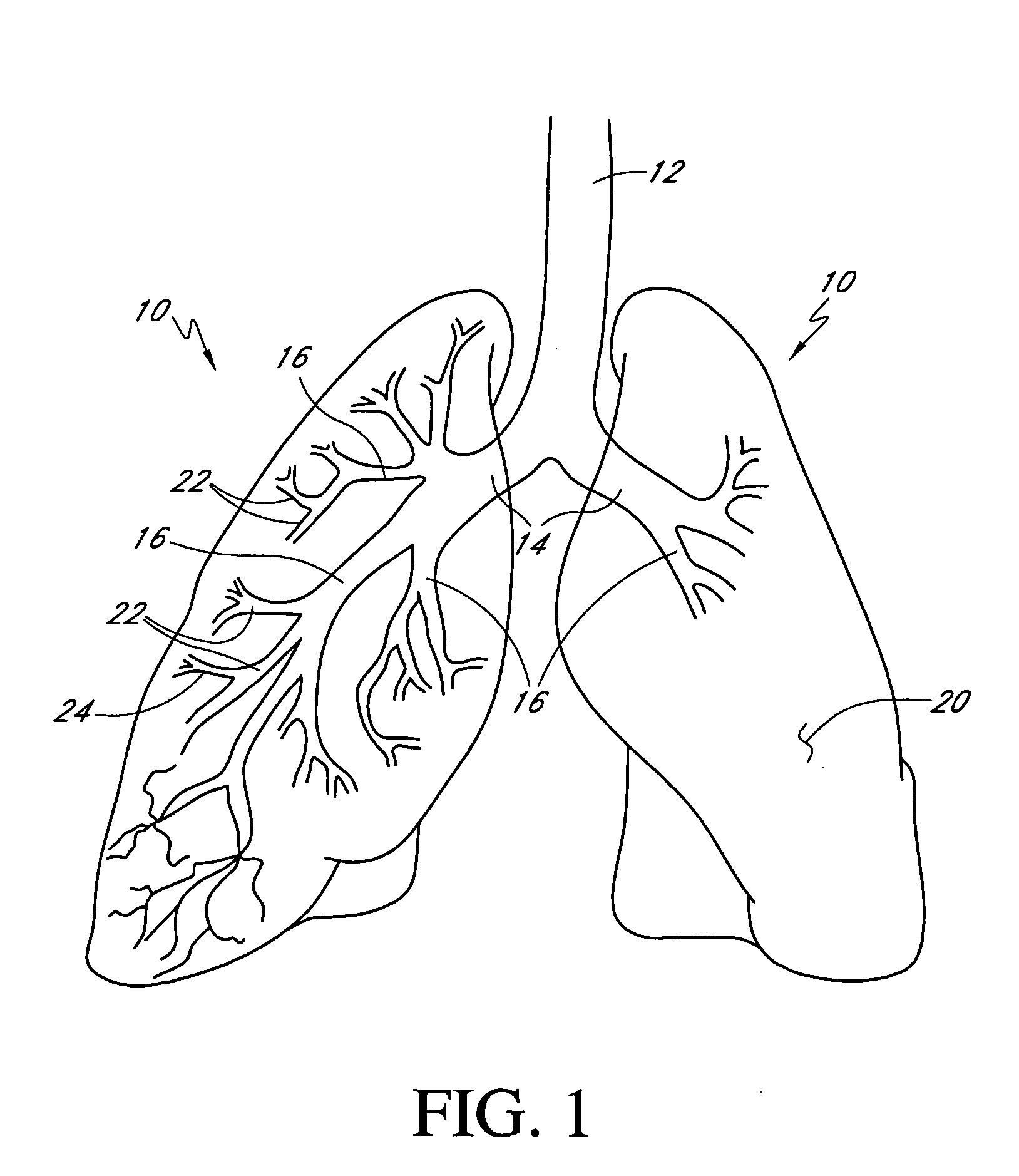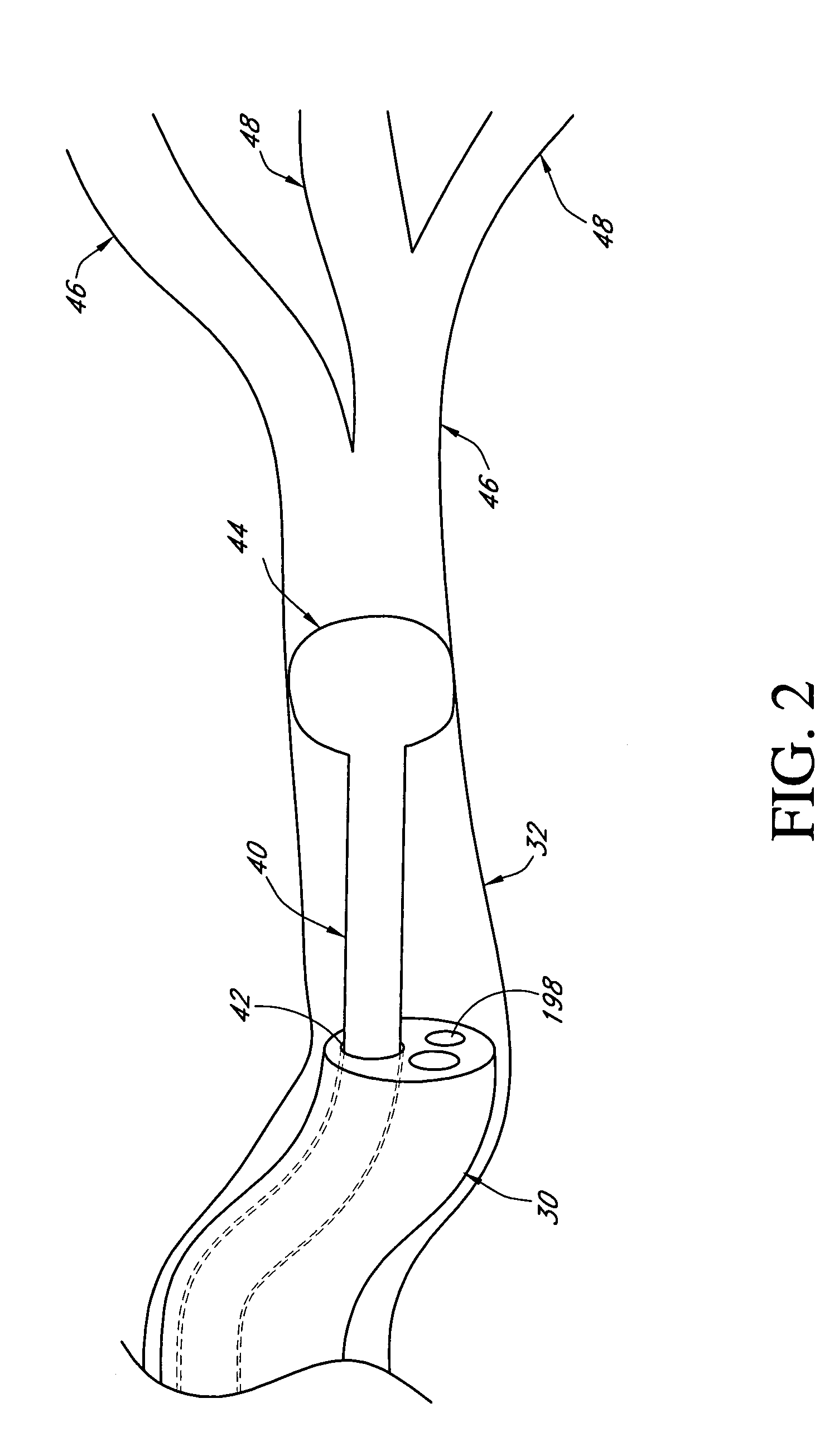Bronchoscopic repair of air leaks in a lung
a bronchoscopy and air leak technology, applied in the field of pulmonary treatment, can solve the problems of severe pneumothorax, air leakage is a common complication, and collapse of the lungs, and other problems, to achieve the effect of reducing the airflow through the fistula, and reducing the risk of pneumonia
- Summary
- Abstract
- Description
- Claims
- Application Information
AI Technical Summary
Benefits of technology
Problems solved by technology
Method used
Image
Examples
Embodiment Construction
[0021] Reference is now made to the figures wherein like parts are designated with like numerals throughout. Referring to FIG. 1, airflow in a lung 10 to be treated generally follows a path from the trachea 12, through the main branch bronchial tubes 14, then through the first generation sub-bronchial tubes 16 and ultimately to the numerous tiny bronchioles 18. The bronchioles 18 lead to alveolar sacs which function to transfer oxygen from the air to the bloodstream. The outer surface 20 of the lung comprises the parenchyma, sub-serous coat and serous coats that seal air within the lung. Air leaks as described herein can be caused by a breach of the parenchyma, the sub-serous coat and / or the serous coat that creates an abnormal passage between the interior air-passageways of the lung and the fluids and tissues external to the lung.
[0022] As used herein, the term “generation” is a broad term, and is used in its ordinary sense and refers, without limitation, to a location of an airwa...
PUM
 Login to View More
Login to View More Abstract
Description
Claims
Application Information
 Login to View More
Login to View More - R&D
- Intellectual Property
- Life Sciences
- Materials
- Tech Scout
- Unparalleled Data Quality
- Higher Quality Content
- 60% Fewer Hallucinations
Browse by: Latest US Patents, China's latest patents, Technical Efficacy Thesaurus, Application Domain, Technology Topic, Popular Technical Reports.
© 2025 PatSnap. All rights reserved.Legal|Privacy policy|Modern Slavery Act Transparency Statement|Sitemap|About US| Contact US: help@patsnap.com



